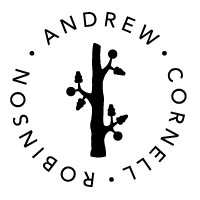Rumor has it that Judy Garland was once confronted in the ladies’ room by a drunken fan pestering her to sing a few bars of “Over the Rainbow.” While making her exit, Judy snapped back, “Madame, I’ve got rainbows coming out of my ass!” Sometimes, that’s exactly how I feel around Gay Pride. The weariness with rainbows and the pink-washing of corporate brands’ performative support often seems to dilute the political and civil rights origins of LGBTQ+ Pride.






I was eight months old when the Stonewall uprising happened on 28 June 1969, but I’ve been fortunate enough to know three people who were there that night, Tommy a former teacher was 15, Yvonne who was celebrating her birthday in the bar with friends, and Martin who described the Stonewall as a mafia run bar with watered down booze. I can confirm that it certainly seemed mobbed up after having once been a bartender in the back room of Stonewall years ago. But that’s another story.

Reflecting on the origins of the Pride rainbow flag adds a significant layer of meaning to its symbolism, transcending its contemporary commercialization. The story of the flag and its creation is a powerful testament to the resilience and unity of the LGBTQ+ community.

The rainbow pride flag was created by Gilbert Baker in 1977-8. Baker, was commissioned by his friends, including Harvey Milk, the first openly gay elected officials in the United States, and Artie Bressan, a filmmaker. They sought a new symbol to represent what Bressan termed “the dawn of a new gay consciousness and freedom.” At that time, the primary symbol for the gay rights movement was the pink triangle, which had been co-opted from its horrific origins as a Nazi tool of oppression. Adolf Hitler had designated the pink triangle to identify and stigmatize homosexuals, similar to the yellow Star of David used to mark Jews.



While the pink triangle had been reclaimed by some in the gay rights movement, it carried a heavy historical burden of persecution and suffering. In contrast, the rainbow flag was intended to be a positive and affirming symbol. Gilbert Baker designed the flag with eight stripes, each color representing a different aspect of the LGBTQ+ experience and ideals:
What I liked about the symbolism of the rainbow is that it fits us. It’s all the colors. It represents all genders. It represents all the races. It’s the rainbow of humanity.
Gilbert Baker


- Hot Pink: Sex
- Red: Life
- Orange: Healing
- Yellow: Sunlight
- Green: Nature
- Turquoise: Magic/Art
- Indigo: Serenity
- Violet: Spirit
The flag was first flown on June 25, 1978, at the San Francisco Gay Freedom Day Parade. The response was overwhelmingly positive, and it quickly gained popularity as a symbol of pride and solidarity within the LGBTQ+ community. After the assassination of Harvey Milk, the rainbow flag was in high demand. Due to manufacturing issues, the hot pink stripe was removed. The turquoise stripe was removed from the flag as a design choice from Baker. The six color pride flag has represented the community for over 40 years and is still one of the most common LGBTQ+ flags.
- Red: Life
- Orange: Healing
- Yellow: Sunlight
- Green: Nature
- Blue: Harmony
- Violet: Spirit



The rainbow flag stands as a vibrant symbol of diversity, inclusivity, and the ongoing struggle for LGBTQ+ rights. While commercial uses of the flag during Pride Month can sometimes feel like “pinkwashing,” remembering its origins helps maintain its significance and the important history it represents. In 2017, Philadelphia took a bold step toward LGBTQ representation with the introduction of the Philly Pride flag, a unique version of the popular six-colored-stripe rainbow Pride flag. The Philly Pride flag adds two new stripes — brown and black — to the top of the rainbow. This new flag was meant to recognize the legacy of activism and anchor inclusion as an essential part of Philly Pride. The design was a collaboration between Philadelphia’s Office of LGBT Affairs and the design agency Tierney, completed in May 2017 and unveiled during Pride celebrations in June. The black and brown stripes on the Philly Pride flag represent the Black and Latino communities, highlighting the importance of intersectionality within the LGBTQ+ movement. The Pride flag has had many different variations over the years, and there are three commonly used varieties in the United States today, in addition to more specific flags like the Trans Pride flag. First is Baker’s six-color rainbow flag, which has its own emoji and was inducted into the design collection at the Museum of Modern Art in 2015. The “More Color, More Pride” flag, commonly known as the Philly Pride flag, is used globally to acknowledge the importance of inclusion and representation. More recently, in 2018, Portland designer Daniel Quasar introduced a redesign known as the “Progress Pride” flag. This flag includes black and brown stripes arranged on the left in the shape of a chevron, along with the colors of the trans flag (light blue, pink, and white). According to Quasar, the flag signifies the forward momentum in the struggle to recognize the importance of people of color, trans and nonbinary folks, and those living with or lost to HIV/AIDS within the LGBTQ+ community. Each iteration of the Pride flag serves as a reminder of the ongoing fight for equality, the diverse identities within the LGBTQ+ community, and the collective history of struggle and celebration.
Related Links
